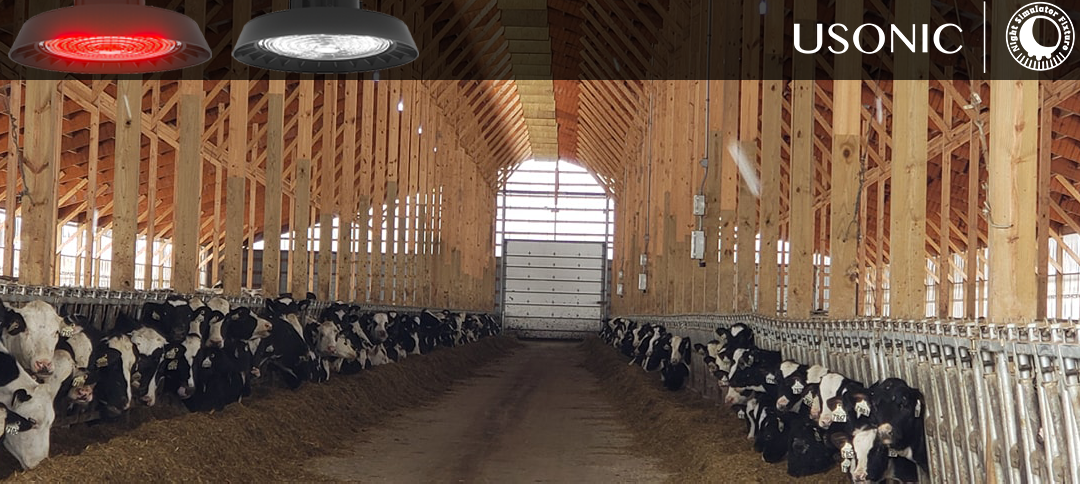The Dawn of a New Era in Dairy Farming
Modern dairy operations face unprecedented challenges: fluctuating milk prices, rising energy costs, and growing consumer demand for sustainable practices. In this climate, Smart Lighting For Dairy Barn has emerged as an unexpected game-changer.
"Five years ago, only about 5% of large-scale dairy farms used specialized lighting systems," notes Dr. Emma van der Berg, an animal science researcher at Wageningen University. "Today, that number exceeds 30% in progressive markets like the Netherlands and Denmark, with rapid adoption in North America and parts of Asia."
Market Dynamics and Regional Adoption Patterns
The shift toward smart lighting reflects broader changes in agricultural technology investment. According to a recent Rabobank report:
Europe leads in adoption, with Scandinavian countries achieving near-100% implementation in enclosed barns
North America shows fastest growth, with 45% year-over-year increase in system installations
Emerging markets like China and India are beginning pilot programs in partnership with multinational dairy processors
This geographic spread reveals interesting variations in application. While Northern European farms primarily use lighting to compensate for limited winter daylight, operations in hotter climates like Australia are experimenting with systems that reduce heat stress while maintaining production benefits
Economic and Operational Impacts
The business case for these systems is strengthening as technology improves. Dairy cooperative Friesland Campina reported that member farms using optimized lighting saw:
8-12% increase in annual milk yield per cow15% reduction in energy costs compared to conventional lighting
Notable improvements in herd health metrics, including reduced somatic cell counts
Perhaps most significantly, the systems are proving valuable for labor management. Automated lighting programs eliminate the need for manual light adjustment, a small but meaningful efficiency gain on large operations
Sustainability and Regulatory Considerations
Environmental factors are accelerating adoption. The European Union's Green Deal has identified agricultural lighting efficiency as part of its carbon reduction strategy, while California's dairy methane reduction program offers incentives for farms implementing energy-saving technologies.
However, the technology faces some regulatory hurdles. Lighting standards vary significantly between markets, and some animal welfare groups have called for more research into long-term effects of artificial light cycles.

Success Stories from Dairy Farms
1. Core Technology
USONIC specializes in Alternating red/white fixtures controlled by external timer simulating night and day events for all types of agricultural animals. The RED/WHITE FIXTURE 2 in 1 reducing the wattage from 150W to the reduced wattage 80wpresenting the opportunity for energy savings0.56kwh per Fixture per Day
2. Key Features
Smart Adaptive Lighting: Automatically adjusts intensity (100-500 lux) based on time of day and cow behavior (via motion sensors).
Energy Efficiency: 50% lower power consumption vs. conventional LEDs (150W for 20x50m barn).
Durability: IP65 waterproof rating and shock-resistant design (-40℃ to +50℃operational range).
Data Integration: Compatible with Farm Management Systems for milk yield tracking
3.Red and white lights
16-18 hours of light per day, followed by 6-8 hours of darkness, can increase milk production by 33%.
Proper lighting regulates melatonin and prolactin levels, hormones essential for lactation.
LED-based lighting systems provide consistent illumination, reducing stress and improving cow behavior.
Traditional incandescent or fluorescent lighting often fails to meet these requirements due to inconsistent brightness, high energy consumption, and short lifespans. In contrast, modern LED cow lighting systems offer customizable spectrums, dimming capabilities, and automated scheduling, ensuring cows receive the ideal light conditions year-round.

Challenges and Future Outlook
As technology advances and costs decrease, experts predict widespread adoption. Future innovations may include AI-powered lighting adjustments based on individual cow behavior and solar-powered systems for off-grid farms.
Conclusion
The dairy farming industry is embracing smart lighting solutions as a key driver of efficiency, sustainability, and profitability. With proven benefits in milk production, energy savings, and animal welfare, cow farm lighting systems are set to become an industry standard. As more farms transition to precision agriculture, lighting technology will play an increasingly vital role in shaping the future of dairy farming.

